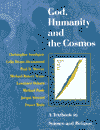Many-Universes Models
These are a convenient way to explain why our universe seems so special, and
precisely geared to allow the possibility of life. The response is simply to
postulate that there are or have been a vast number of universes. Three such
strategies are to be found in the literature.
- The first is to extend the Big Bang model to permit an endless series of
expansions and contractions: the so-called cyclic Big Bang (see is the
Big Bang a moment of creation?). Each passage through a singularity is supposed
to randomize the physical parameters which give rise to the anthropic features.
In an infinite series of closed universes there will certainly be a subset
whose physical features permit the evolution of life and the function of the
Weak Anthropic Principle is to remind us that only in such an atypical subclass
of universes could life evolve. The main difficulty faced by this scenario is
justifying the assumption that, while the singularity randomizes the laws and
constants of nature, it leaves the geometry of spacetime untouched. If, as
seems reasonable, passage through a singularity also affects the geometry of
the universe, we should expect an open Big Bang after a finite number of
cycles, thus putting an end to any hope of an infinite sequence of universes.
-
A second approach would be to opt for one of the recent
sophisticated variants of steady-state cosmology. For example, one may envisage
an infinite chaotic universe in which ‘bubbles’ of order appear and
disappear at random. Thus our universe is merely a small local departure from
the steady-state conditions. However, if spacetime is truly infinite in extent,
we should expect every possible stable state to appear an infinite number of
times!
-
The third and, currently, most popular strategy for
relaxing the uniqueness of our universe is to adopt a many-worlds
interpretation of quantum mechanics. Again it is sufficient to invoke the Weak
Anthropic Principle to ‘explain’ our atypical cosmos.
Email
link | Feedback |
Contributed by: Dr. Christopher Southgate
Source: God, Humanity and the
Cosmos (T&T Clark, 1999)
|




